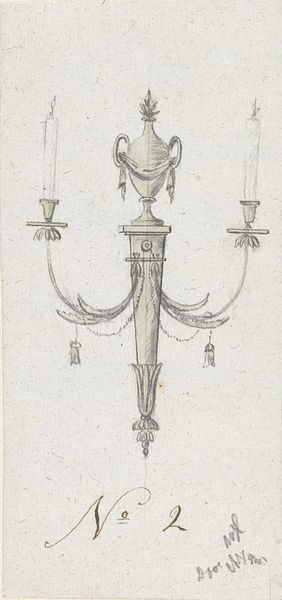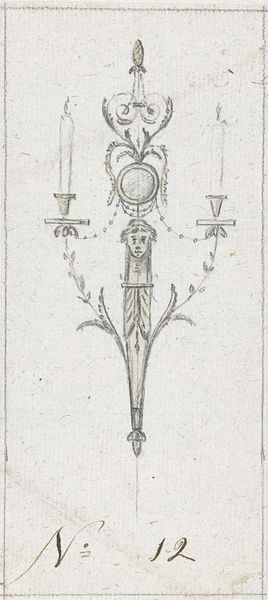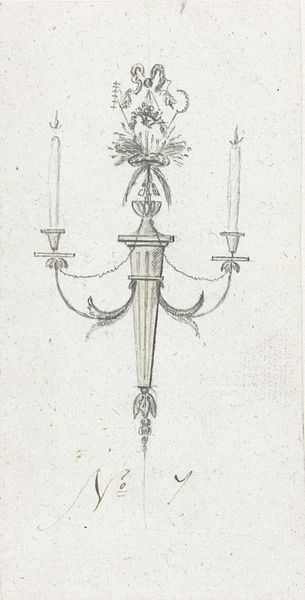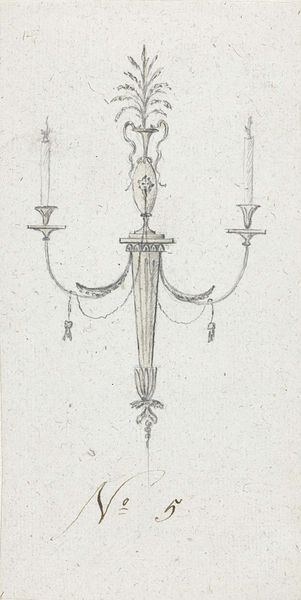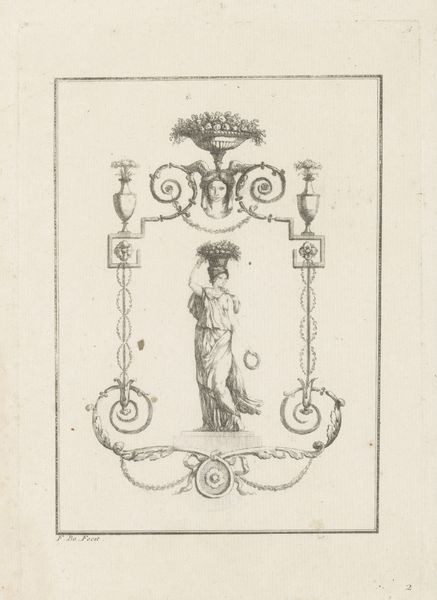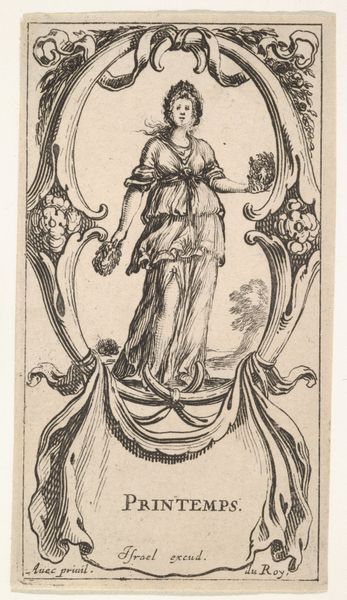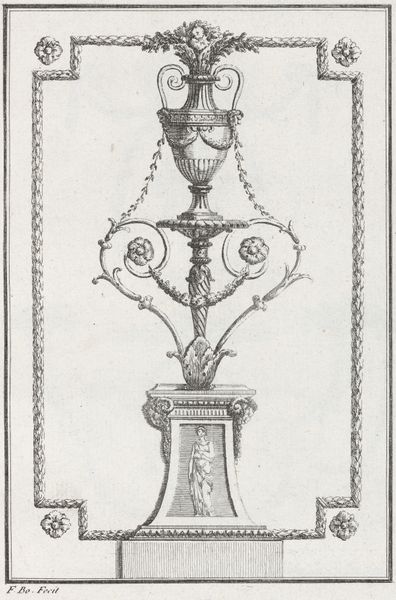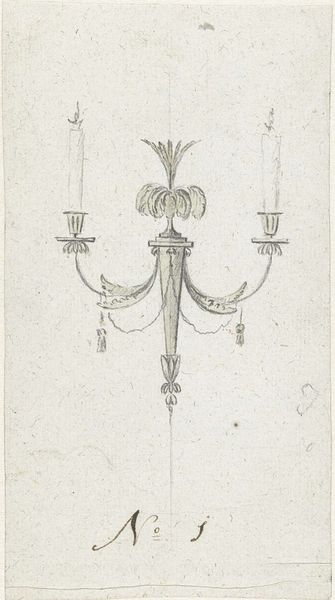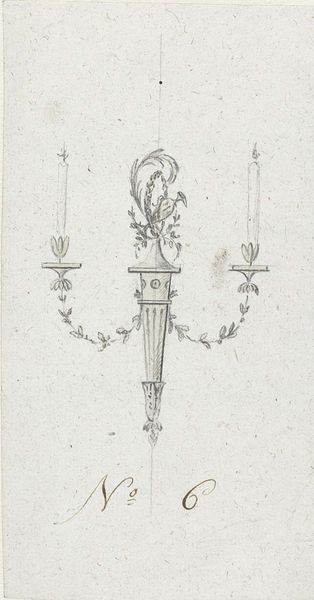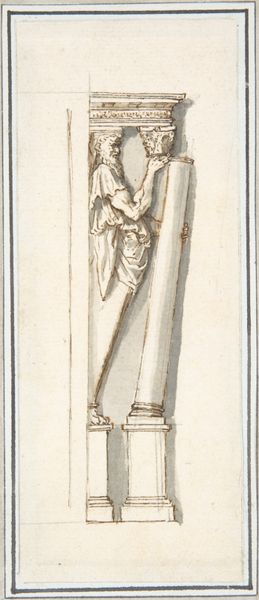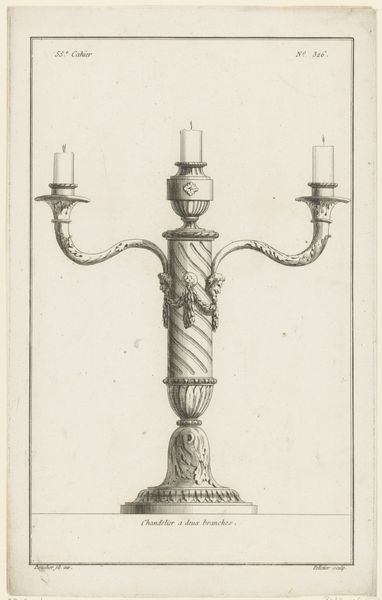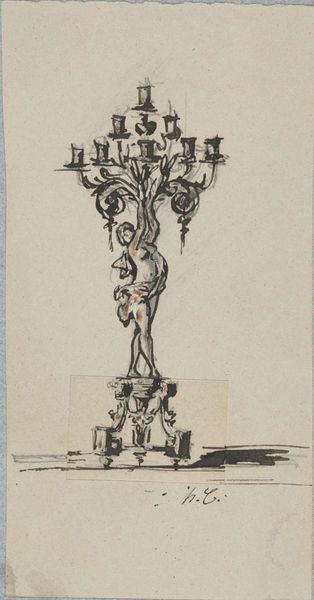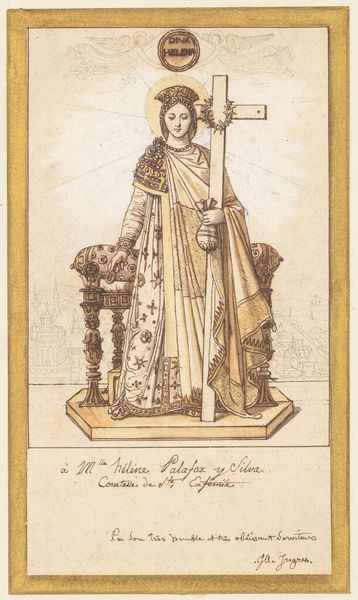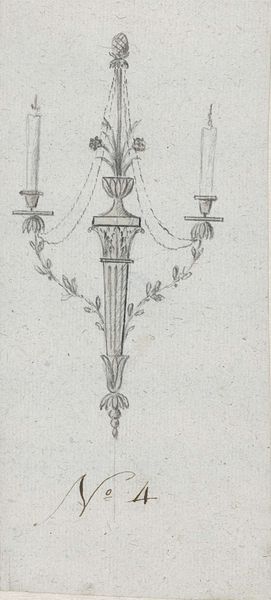
drawing, pencil, pen
#
drawing
#
neoclacissism
#
quirky sketch
#
old engraving style
#
form
#
personal sketchbook
#
sketchwork
#
geometric
#
pencil
#
ink colored
#
pen work
#
sketchbook drawing
#
pen
#
decorative-art
#
sketchbook art
#
fantasy sketch
#
initial sketch
Dimensions: height 163 mm, width 80 mm
Copyright: Rijks Museum: Open Domain
This design for a candlestick was made by Abraham Meertens, likely with graphite and ink on paper. It's a material record of an idea, a crucial step in the production of luxury goods during the late 18th and early 19th centuries. The drawing provides insight into the aesthetics of the period, showcasing a Neoclassical style with its symmetrical design and elegant, elongated forms. The design incorporates classical motifs, such as the female figure, and botanical elements, reflecting the era's interest in antiquity and the natural world. But it also speaks volumes about the division of labor, with designers like Meertens conceiving objects that would then be realized by skilled metalworkers. Designs such as these testify to the close relationship between artistic vision and the skilled labor required to transform ideas into tangible objects, often elided in conventional art history. It reminds us of the social and economic context in which art and design are created.
Comments
No comments
Be the first to comment and join the conversation on the ultimate creative platform.
